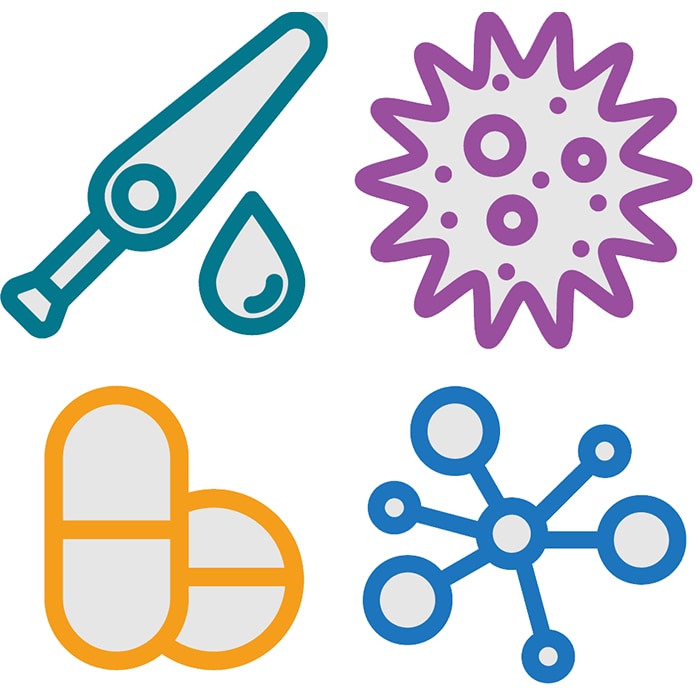Visit the COVID-19 and HIV page for the latest updates on the novel coronavirus outbreak and HIV.
Prevent

The Ending the HIV Epidemic in the United States (EHE) initiative aims to reduce new HIV infections by 90% by 2030. The initiative includes four pillars: DIAGNOSE, TREAT, PREVENT, and RESPOND, and will scale up science-based strategies for each that can end the epidemic.
To prevent new HIV transmissions, CDC is supporting proven interventions, including preexposure prophylaxis (PrEP) and comprehensive syringe services programs (SSPs).
PrEP is medication that is highly effective in preventing HIV.
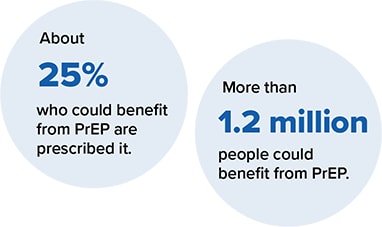

In a study among transgender women who were HIV negative, PrEP awareness is high but use is low. 92% had heard of PrEP but only 32% had used it in the last 12 months.†
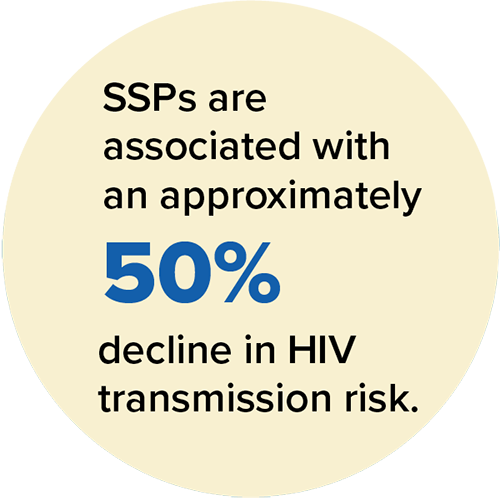
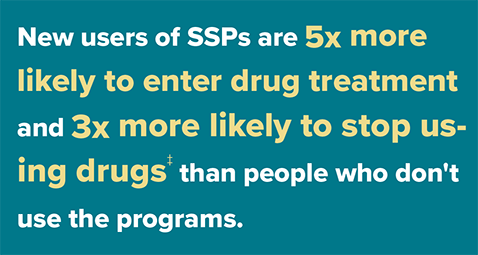
SSPs are community-based programs that provide access to sterile needles and syringes, facilitate safe disposal of used syringes, and provide a link to other important health and social services and programs.
CDC is accelerating efforts to increase availability and use of PrEP, particularly for disproportionally affected populations with the highest rates of new HIV diagnoses and low PrEP use.
Strategies:
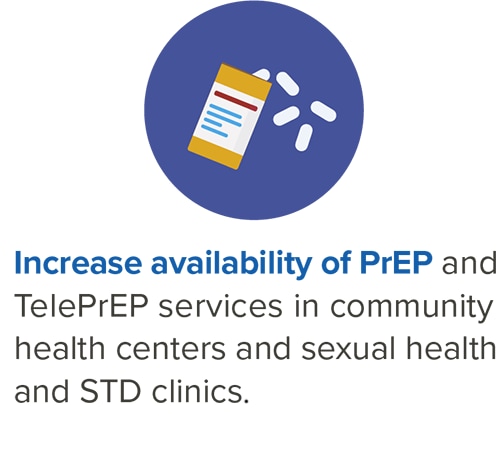
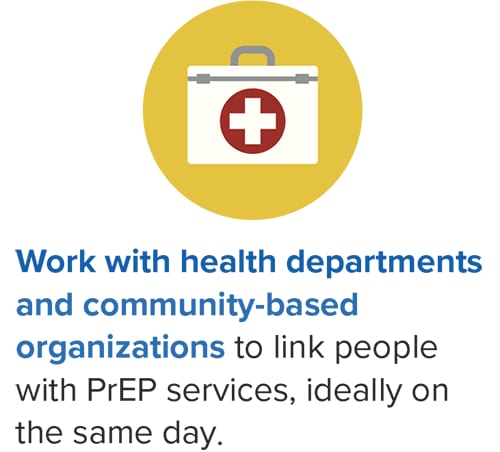
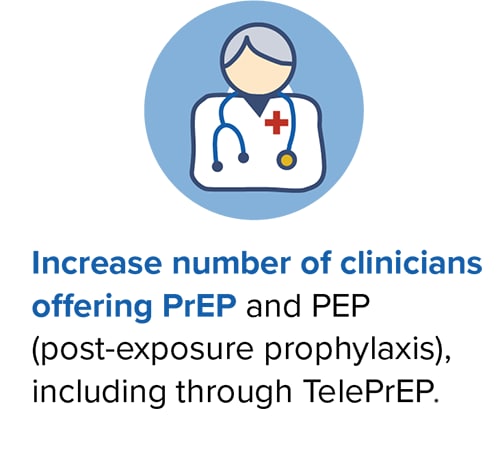
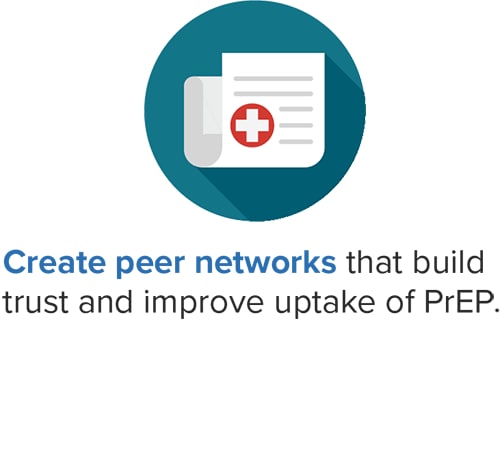
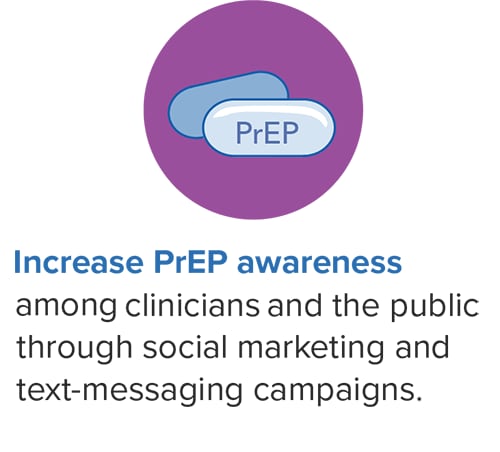
CDC is working to increase the availability, use, and access to and quality of comprehensive SSPs using innovative delivery options when feasible.
Strategies:
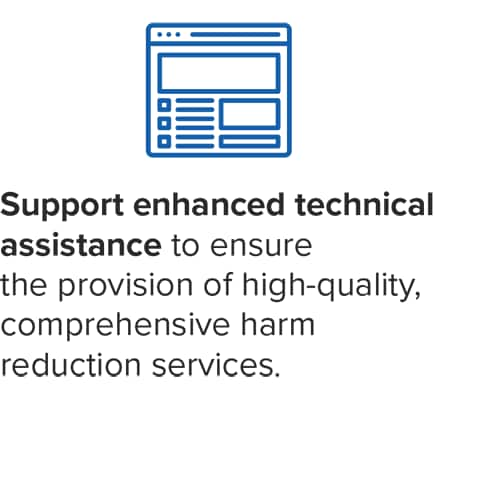
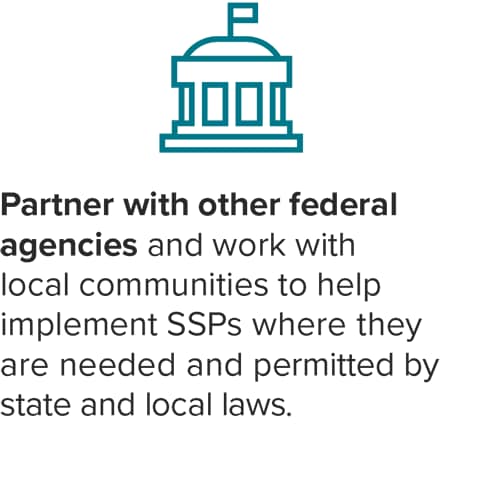
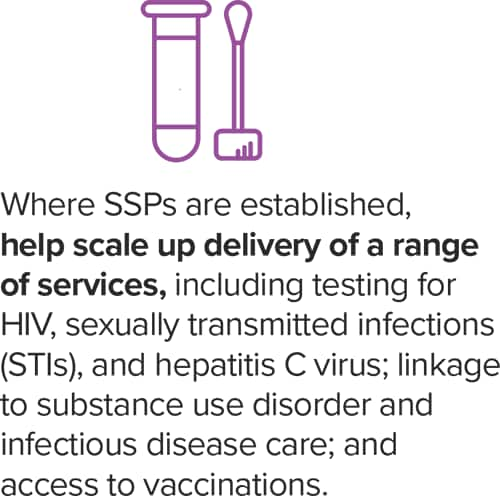
Ending the HIV Epidemic Goals
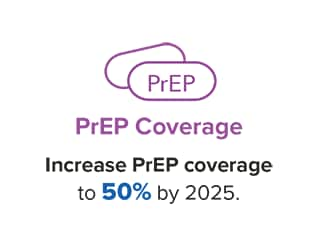
* Centers for Disease Control and Prevention. Core indicators for monitoring the Ending the HIV Epidemic initiative (preliminary data): National HIV Surveillance System data reported through June 2021; and preexposure prophylaxis (PrEP) data reported through March 2021. HIV Surveillance Data Tables 2021;2(No. 4). https://www.cdc.gov/hiv/library/reports/surveillance-data-tables. Published October 2021. Accessed November 30, 2021.
** Transmission category data are presented based on sex at birth and include transgender persons.
† Centers for Disease Control and Prevention. HIV Infection, Risk, Prevention, and Testing Behaviors Among Transgender Women—National HIV Behavioral Surveillance, 7 U.S. Cities, 2019–2020. HIV Surveillance Special Report 27. http://www.cdc.gov/hiv/library/reports/hiv-surveillance.html. Published April 2021. Accessed January 19, 2022.
‡ Hagan H, McGough JP, Thiede H, Hopkins S, Duchin J, Alexander ER, “Reduced injection frequency and increased entry and retention in drug treatment associated with needle-exchange participation in Seattle drug injectors”, Journal of Substance Abuse Treatment, 2000; 19:247–252.
